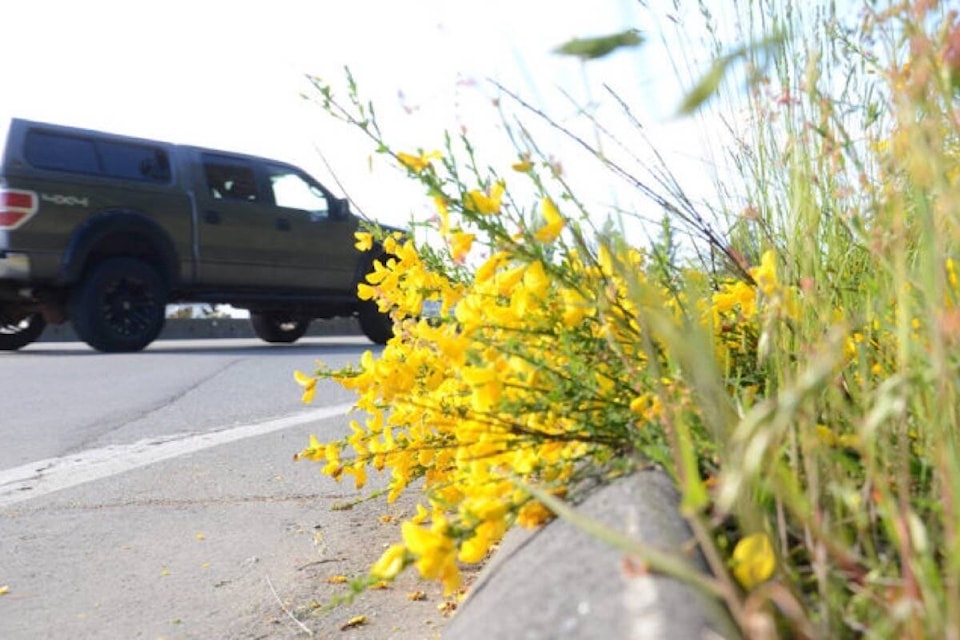A volunteer group intent on eradicating Scotch broom is warning that the invasive species also poses a fire risk.
There are worries about drought conditions given water issues from last summer and the recent polar vortex, followed by Pineapple Express rains. Joanne Sales, Broombusters Invasive Plant Society executive director, said this year has been particularly dry and Scotch broom is something to be wary about.
The shrub is the “top offender of biodiversity” and the one “causing the greatest harm to species in B.C.,” she said.
“The main reason we’re all paying attention is because of fire danger,” Sales told directors. “Broom has naturally occurring dry branches and high oil content. The plant’s volatile oils make it an easy ignition source especially during dry summer months and its ability to spread quickly and form dense stands increases the fuel load.”
Sales expressed gratitude to the Regional District of Nanaimo for a recommendation that passed at both Association of Vancouver Island and Coastal Communities’ and Union of B.C. Municipalities conferences, calling for the B.C. government to take better steps to halt Scotch broom’s spread. Going forward, she said local government officials can continue to make Scotch broom disposal possible, pass bylaws to reduce fire risk, particularly on vacant and development land and nearby gravel pits, and ask for more from B.C. Hydro.
“B.C. Hydro’s current policy is to remove trees, but leave the broom,” Sales said. “Local governments can request broom be clear for fire mitigation and to stop spreading seeds.”
Sales said broom cut by the organization in an RDN municipality is placed by the side of the road and picked up by municipalities. If removed in an RDN area, Broombusters contracts a tree service that will chip debris, she said.
– files from Michael Briones, Black Press Media
RELATED: UBCM resolution to halt Scotch broom invasion applauded
RELATED: Group wants landowners to sweep Scotch broom from properties



